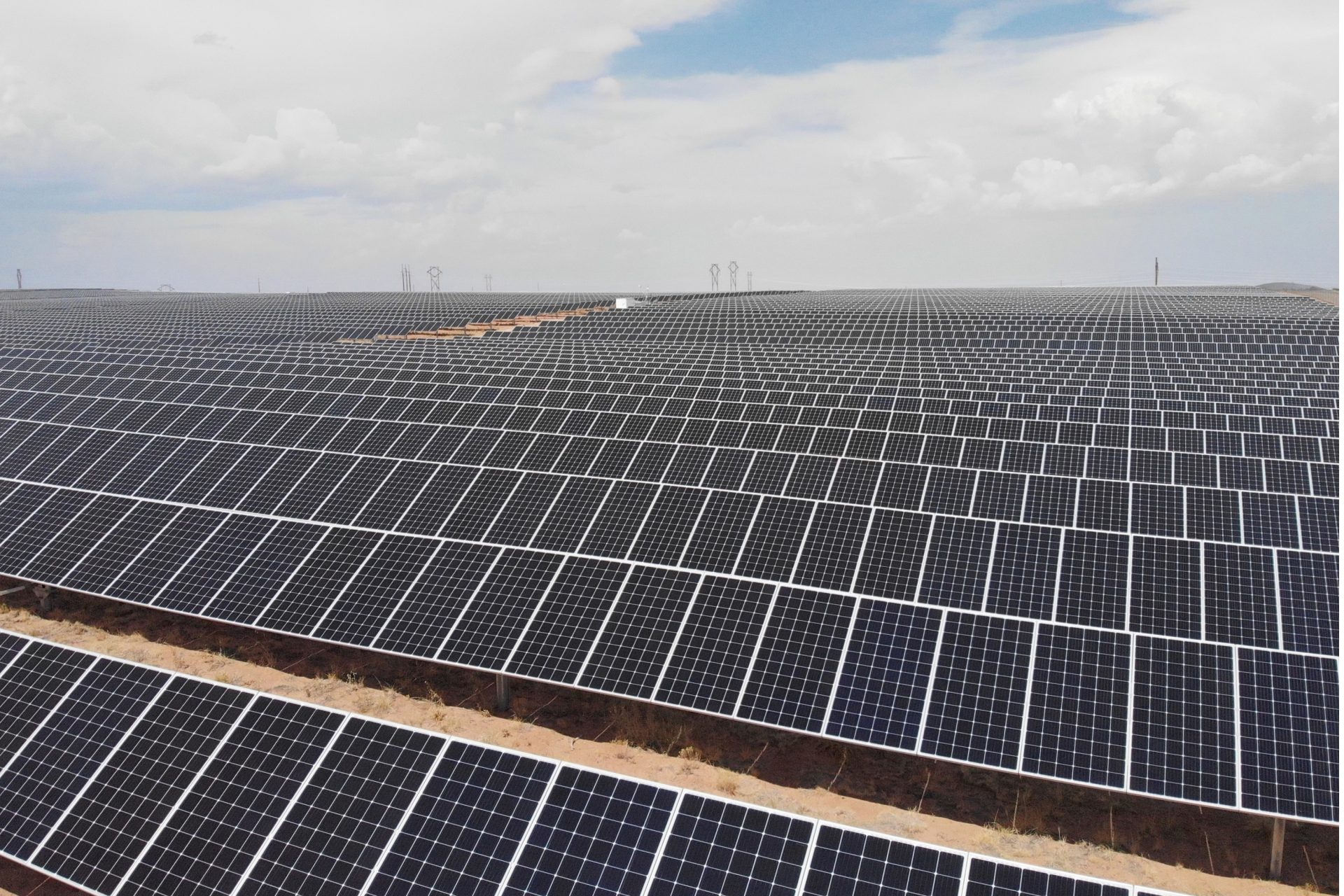|
Only have a minute? Listen instead
Getting your Trinity Audio player ready...
|

HARLINGEN — The city’s first solar farms planned to shoulder up the local electric grid might be springing up across farmland near the airport.
Now, a developer is requesting city commissioners consider granting a special permit to help his company build two solar farms on 13- and 27-acre tracts off Grimes Avenue near Valley International Airport.
John Porter, chief executive officer of Clean Footprint, a Cape Canaveral, Fl., company, is requesting commissioners consider granting the special use permit to develop solar farms generating 1.6 and 3.5 megawatts of alternating current in the area zoned for light industry.
“We are in an energy revolution,” Porter, who said he founded his company 13 years ago, told commissioners during an Aug. 16 meeting. “We believe solar is part of that. We’ve had quite a bit of experience doing this in other communities.”
If commissioners decide to grant the permit, he said he would consider developing more solar farms in the area.
Tapping AEP substation
During a presentation, Porter said he picked the proposed project sites based on their proximity to an AEP Texas substation off Grimes Avenue.
“We find properties that are properly situated near substations to allow us to do larger solar farms normally in the 20- to 40-acre type-size, which is what we’re putting forward to the city of Harlingen,” he said.
Porter told commissioners the solar farms would help bolster the area’s electric grid during crises such as the February 2021 freeze that overloaded the state’s electric grid, spurring soaring energy costs that left the city footing a $649,000 electric bill.
“It can add resiliency to your local grid,” he said. “Our projects are designed to produce local energy that is then used locally.”
Feeding local electric grid
Since last year, officials here have been expanding the city’s energy sources.
In the last year, commissioners have granted two companies special permits to develop battery storage plants aimed at generating enough energy to charge up about 50,000 homes for up to two hours during power outages.
“Between your battery system that you all have approved and solar farms on our scale … we can build resiliency long-term,” Porter told commissioners. “We would be part of a process of having Harlingen be able to handle a natural disaster more easily.”
Proposed airport site
As part of the overall project, Porter’s proposing to develop a solar farm generating 1.6 megawatts of alternating current standing as high as 15 feet across 13 acres at the foot of Valley International Airport’s runway.
Porter said the proposed solar farm, whose value is projected at $2.6 million, would pump an estimated $709,435 in property tax revenue over the project’s lifespan, ranging from 30 to 40 years.
“We have to make sure this works for the airport,” he told commissioners. “We are absolutely team players. We have to make sure that this is not any type of hazard for the flying public and that would be something we would work through with the airport authority.”
From the podium, Marv Esterly, the airport’s aviation director, told commissioners he supported the proposed project that would help turn the land at the foot of the runway into a “buffer” zone.
“It provides a benefit to the airport,” he said. “When land can’t be utilized for a lot of other things, it can be utilized to act as a buffer between the airport and incompatible land use.”
Generating tax revenue
Meanwhile, Porter is also proposing to develop a second solar farm producing 3.5 megawatts of alternating current off Grimes Avenue.
The proposed solar farm with an estimated value of $5.7 million would generate $1.5 million in property tax revenue over its lifespan, he said.
“It’s a perfect situation in that it is very flat. We have access to three-phase power, which we’ll need,” Porter told commissioners, referring to the proposed solar farm’s type of alternating current. “The conductor strength is very good and we’re close enough to the substation to make these projects viable.”
The two solar farms would create a job for a maintenance worker, he told commissioners.
More solar farms?
In response to Commissioner Frank Morales’ question, Porter said he would consider developing more solar farms in the area if commissioners granted the permit.
“That’s really why I’m here tonight — to see, ‘Does the city of Harlingen want us to be here,’ and if the answer is ‘yes,’ then I’ll have my analyst look at other substations in the area and if there are good sites that fit the requirements of hopefully the new zoning,” he said. “Then we would look at that.”
Cutting energy production costs
During his presentation, Porter said solar energy is helping to cut energy production costs.
Since he founded his company 13 years ago, energy production costs have dropped threefold, he said.
“The solar industry continues to grow — it is becoming more and more inexpensive,” he said. “It is amazing the technology keeps getting better. We need less and less land to produce more power because the power of each individual solar panel is getting more watts per square foot. That’s exciting in that I can see a day when power, or electricity, starts going down. We believe we’re part of reducing the long-term cost to consumers and businesses of energy which they will need in order to make their business or their home more affordable.”



